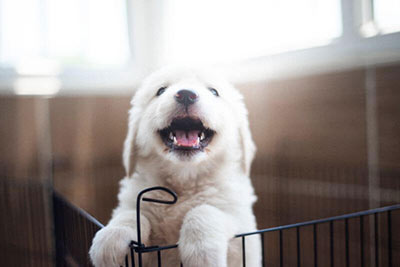The Gift That Keeps On Giving: Dog Training and Socialization Techniques

When we like what other people do, we show our appreciation by giving high fives, clapping, cheering, and offering compliments. Because of this, we learn to repeat whatever we did to earn more positive feedback. Perhaps unsurprisingly, dogs are quite similar. When they receive opportunities to earn rewards and praise, they are likely to repeat good behavior.
Dog training doesn’t happen by accident or overnight. With consistency, control, and patience, dogs can learn their place in the household while pleasing their owners.
New to You
So many people have become new dog owners this year, but proper dog training is more than simple affection and belly rubs. The good news is that once positive reinforcement strategies are established (and maintained), dogs and their owners learn how to turn ownership into full-fledged companionship.
The Broad Strokes
Positive reinforcement training involves adding a reward for the things you want your dog to do (and repeat) while ignoring unwanted behavior. The rewards can vary and may include high-value treats, head scratches, and loads of affection. In the case of housetraining, you should give rewards immediately following a success in order for your dog to connect their action with their reward.
Teaching commands goes a long way toward building the bond between you and your dog and helps strengthen your role as their pack leader.
The Opposite Effect
Scolding or punishing your dog for doing something “wrong” can actually reinforce the behavior you want them to stop. Instead, it’s important to ignore or remain neutral when they jump on someone or pee on the floor. Otherwise, they may connect their behavior with feelings of fear or stress, and these can be difficult to reverse.
We didn’t say it wasn’t challenging!
Importance of Socialization
Dog training really starts to take effect around 2 months old, but you can take advantage of opportunities for socialization right away in a puppy’s life (even before their first wellness exam). They should get used to being held and handled, and benefit from safe introductions to other people, kids, pets, and environmental stimuli like traffic and crowds.
A well-adjusted dog is happy and confident. Once they know and demonstrate understanding of what’s expected of them, they have the potential to really flourish. The alternative could be a dog that is stressed out and fearful of strangers, loud noises, and may even have problems with aggression.
Dog Training For the Win
Proper dog training and socialization opens up a whole world of possibilities for your four-legged friend. This means that you can go places together, they can safely participate at dog parks or doggie daycares, and they become easier and more fun companions. This makes for a happier dog overall.
If you have further questions about dog training and the importance of socialization, please let us know. We’re always here for you at The Bluffs Pet Clinic.

